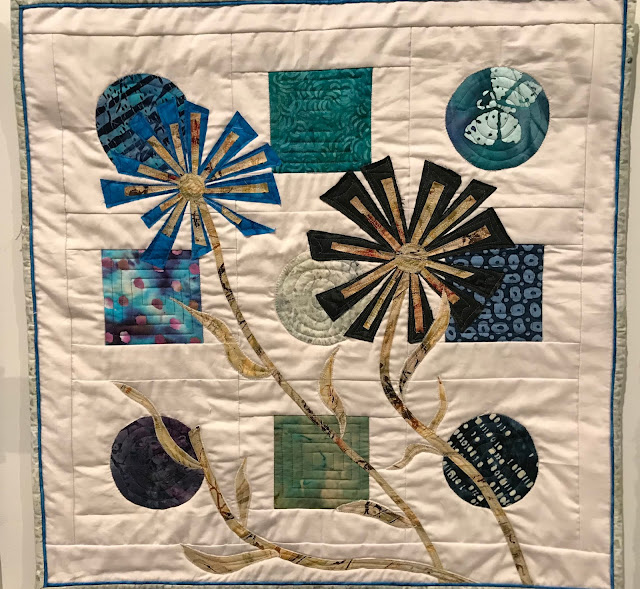I got my Brother NX-650Q nine years ago just after I retired and had decided to learn to quilt. It's a good machine -- I'm planning on keeping it -- but the harp space is way too small to quilt even a twin-size quilt, especially if one is stitching in the ditch on the diagonal. I was replacing a 35-year-old Kenmore, and I did a lot on on-line research to figure out what I wanted at a price that seemed reasonable. (BTW, I wish I'd kept the Kenmore, with its single-hole needle plate and strong engine). Oh well. I LOVED the Brother. It came with a large extension table, a gazillion feet, a ton of stitches, including alphabet. I was in awe.
But over time, as I did more quilting, I became aware of its limitations. In addition to the small harp space, the motor just didn't have enough strength to power through heavy seams, and the zig-zag needle plate just sucked up triangles. Single-hole plates are $$. Earlier this month I decided that it was time to quilt the Otsego Lake quilts. It was so frustrating! The walking foot and/or the needle would stall where flying geese came together at the points. The thread kept breaking. The vibration caused screws to come loose, causing the needle to drop and break and the walking foot to come apart. Garrrr! Yes, most problems were resolvable, but still...
Again I did some internet research, this time with more understanding of what I needed. My friend Deb told me how much she loves her Janome Memory Craft 6700P, and she does FMQ on huge quilts on hers. Kelli, the owner of Riverhead Vac and Sew, offered me a very good price. And the Janome has 3" more harp space horizontally than the Brother. Not the biggest available, but just fine for me. Ultimately, although I did find a couple of used machines on line, I decided that it was worth the extra money and peace of mind to buy from my local dealer.
My playground! Janome standing confidently in the background, Brother in the table, Featherweight to the side. I was so excited to get to work on the backlog of quilting. I soon discovered that the Janome doesn't have a stipple stitch that I wanted to use, so she moved back and the Brother went back into the table for a little while. Soon enough she came back out. I keep my Featherweight set up on the side of my sewing table for opportunistic piecing.
Now, as National Sewing Month wraps up, I'm happy to say that one of the two twin-bed Otsego Lake quilts is quilted and ready for binding.
You may notice some (!) less-than-perfect points and seam matches. This was the first "real" quilt that I had embarked on (not counting a baby quilt that was the product of a DVD-based how-to-quilt class). The cutting was not very good, my sewing was not very good, etc., etc., you know the drill. I squared up the top as best I could and started quilting and by stitching in the ditch along the diagonal lines. But since there were few genuinely straight lines, things quickly got out of whack. When I started stitching along the horizontal lines of the border, nothing wanted to stay flat. And yes, I used a walking foot.
There were pleats and folds everywhere. I spent hours and hours trying to ease the fabric, with little appreciable improvement. This afternoon I decided that I was wasting my time. Step back! Can you see it from the Mackinac Bridge? Maybe when the quilt is washed, these won't be so noticeable.
So I decided to move on: binding! I'm not sure how that will go, either. The edges are going to be very wavy. But that's not a flaw! It's a feature! They represent the waves on the lake!
When you can't decide what to make, make excuses!





































